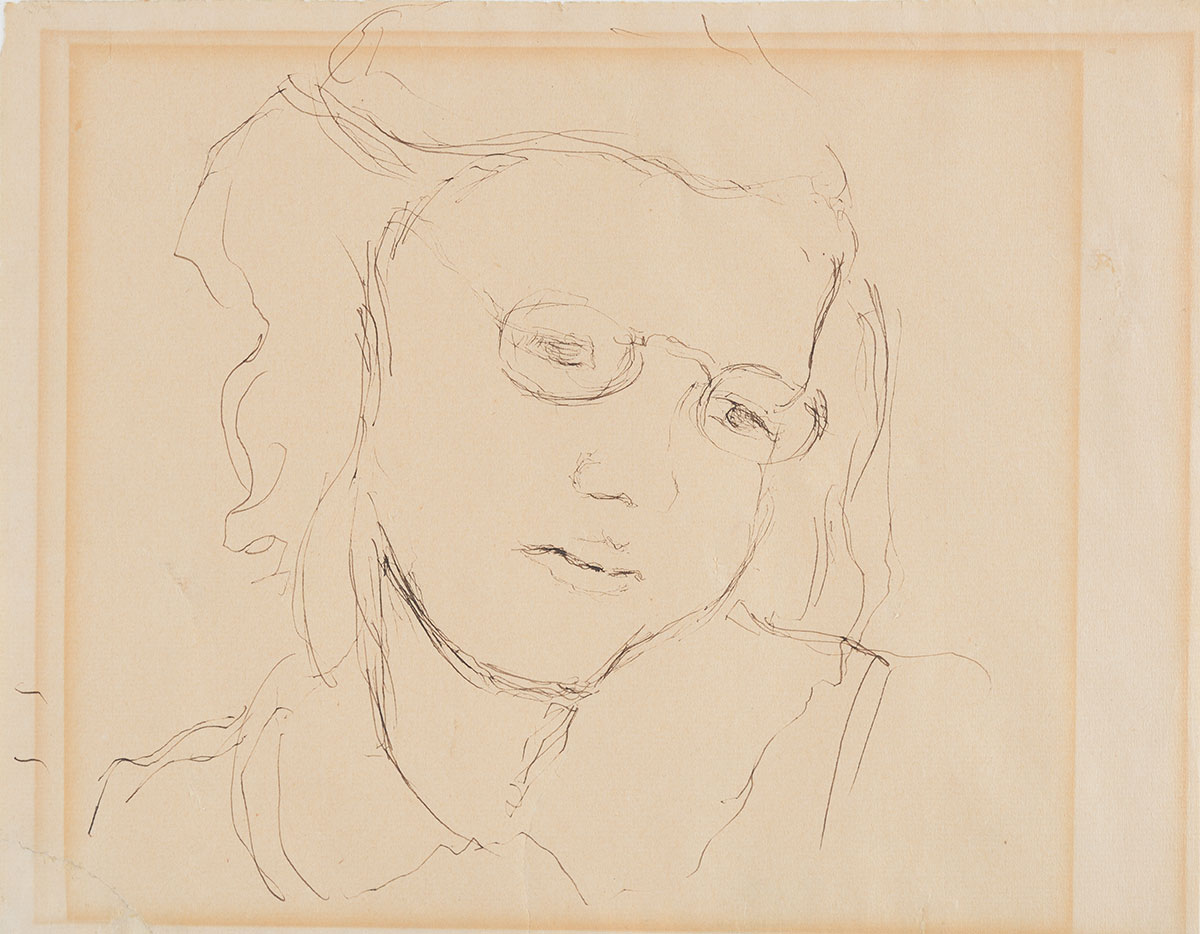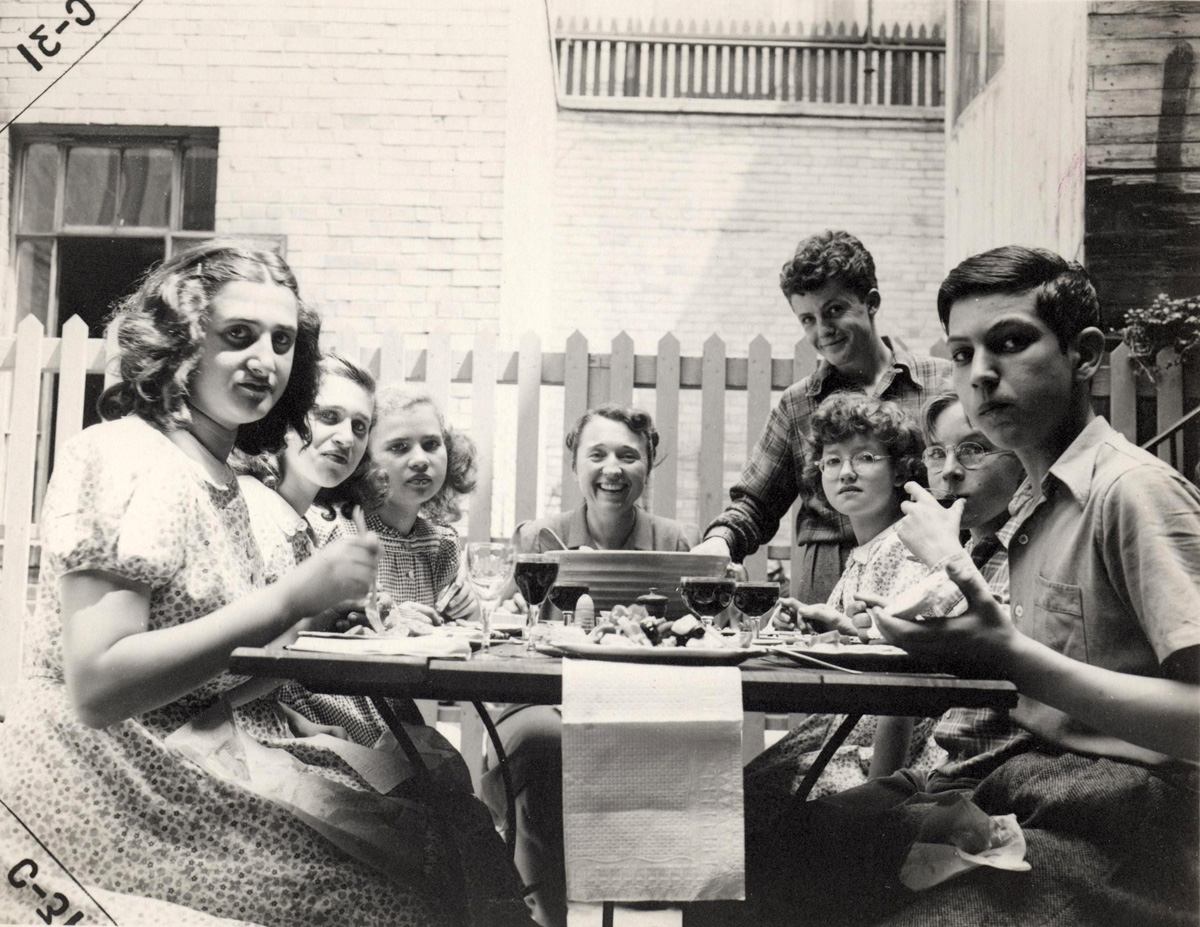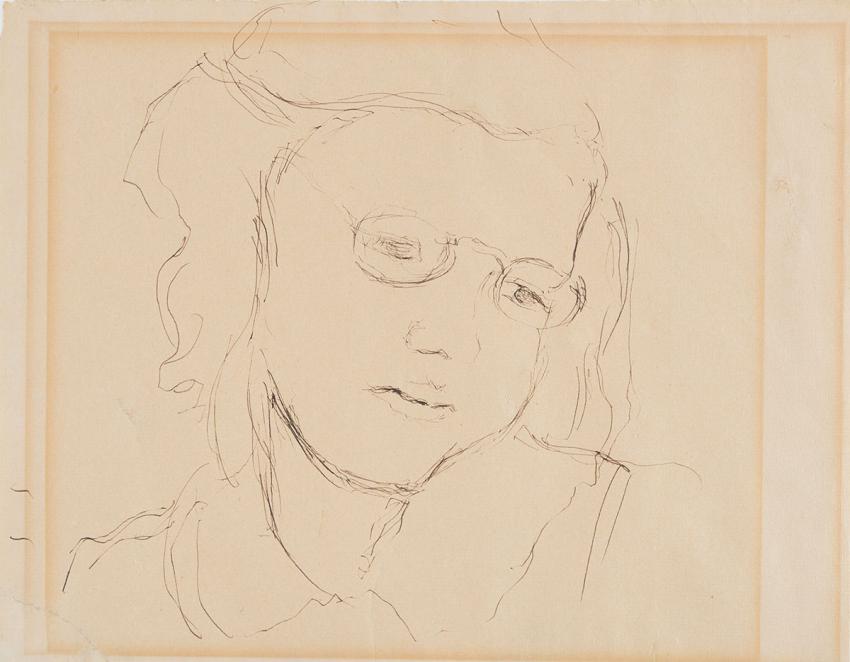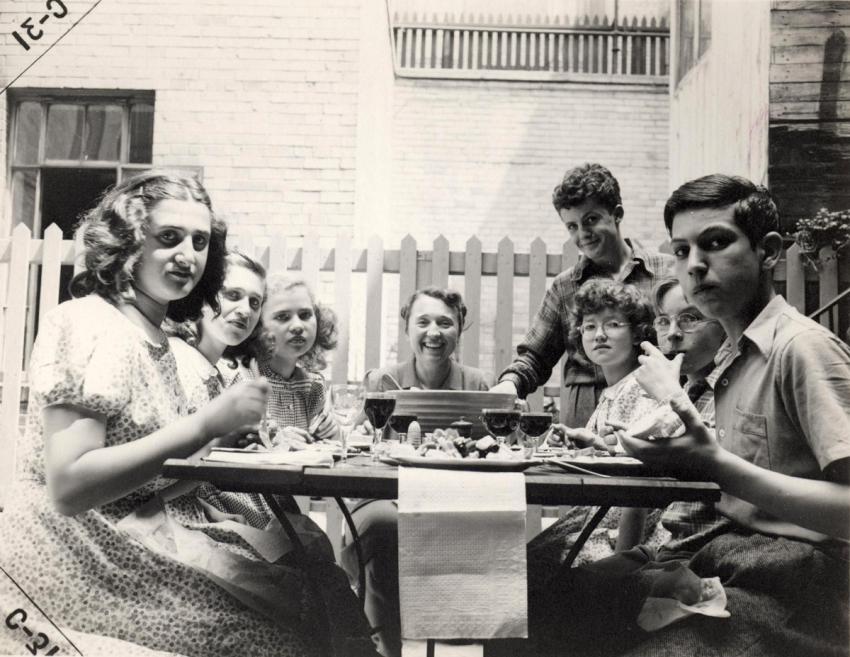“I was in Juan-Les-Pins, near Villefranche, on holiday with my mother, in 1939. We happened to meet Mrs. Moore (who was my godmother) in the street the day after war was declared. Mrs. Moore said she was returning to the U.S. and would be glad to take me with her, to which my mother gratefully agreed, for my safety. I was handed over there and then, in my bathing suit (and no clothes!)”
So relates Valerie Kampf (née Page), in a letter to Yad Vashem that recollects her placement, at seven, with Ottilie Moore. Valerie was a British citizen, while Ottilie was a colorful American millionairess of German origin who resided in Villefranche. Ottilie’s offer was accepted with alacrity by Valerie’s mother, who was deeply concerned about her daughter’s safety. She herself returned to England, where she became an officer in the WRENS (women’s naval corps).
Valerie was the first child to find asylum on Moore’s French estate, which became a haven for many other refugees as well. Among them were Jewish orphans, pregnant Jewish women, and the Grunwalds of Berlin—grandparents of the young artist Charlotte Salomon: they had met Mrs. Moore on one of their vacations and had moved to the estate after Hitler’s rise to power. The Grunwalds had been in Villefranche for some time when, in January of 1939, and under the pretext of visiting her sick grandmother, Charlotte left Berlin and joined her grandparents.
After the German occupation of France, Ottilie Moore became increasingly worried about the children’s safety. Despite immense difficulties, she succeeded in obtaining visas to the U.S. for most of the youngsters under her protection. In late September 1941, she packed ten of her charges into her luxury Ford station wagon —her daughter, her nephew, Valerie Page, seven other children (six of whom were Jewish), and her poodle, Martini. The older children crowded together on the seats, with two babies lying in cradles hung from the car ceiling, while towing the huge load of suitcases behind. The trip took 10 days, during which the travelers crossed the Spanish border and continued on to Portugal. Mrs. Moore and the children then set sail on the Excalibur, bound for the safe shores of New York City.
In the period before the German occupation, and enchanted with Otillie’s estate, Charlotte had painted the villa and its fruit trees against a Mediterranean background. Among the works that have survived from that period is a portrait of eight-year-old Valerie, a stylistically austere drawing that nevertheless conveys the tenderness and joy that Charlotte felt for the child. A fine pictorial line binds the young, withdrawn painter to the bespectacled, lonely girl, in temporary exile both from home and from family.
Charlotte and Valerie were fated never to meet again, for Charlotte stayed behind in Villefranche. In 1943 she was deported to Auschwitz, where she was murdered at the age of twenty-six. The girl captured for posterity by Charlotte Salomon is now one of the last witnesses able to tell us first hand about the young Jewish painter who lived, for a time, in Villefranche. All that remains from this intimate encounter is a modest but sensitive portrait.
During a meeting in New York with Yehudit Inbar, Director of Yad Vashem’s Museums Division, Valerie talked about her special acquaintance with Charlotte. This resulted in the initiative to acquire Charlotte’s works for Yad Vashem’s collection, a process finalized with the arrival of this portrait to the Holocaust Art Museum. The artworks that Charlotte produced while residing at Ottilie Moore’s villa—most of which are now part of the Yad Vashem collection and can be viewed in the permanent exhibition of the Holocaust Art Museum—provide a rare glimpse into life at an estate that became a sanctuary for destitute refugees. They also tell the wonderful story of the eccentric, impulsive, resourceful and courageous American woman who opened her doors—and her heart—to those in need.
We extend our sincere gratitude to Barbara and Lewis Shrensky, whose generosity made this acquisition possible.
First published in Yad Vashem Jerusalem magazine, #46, July 2007




